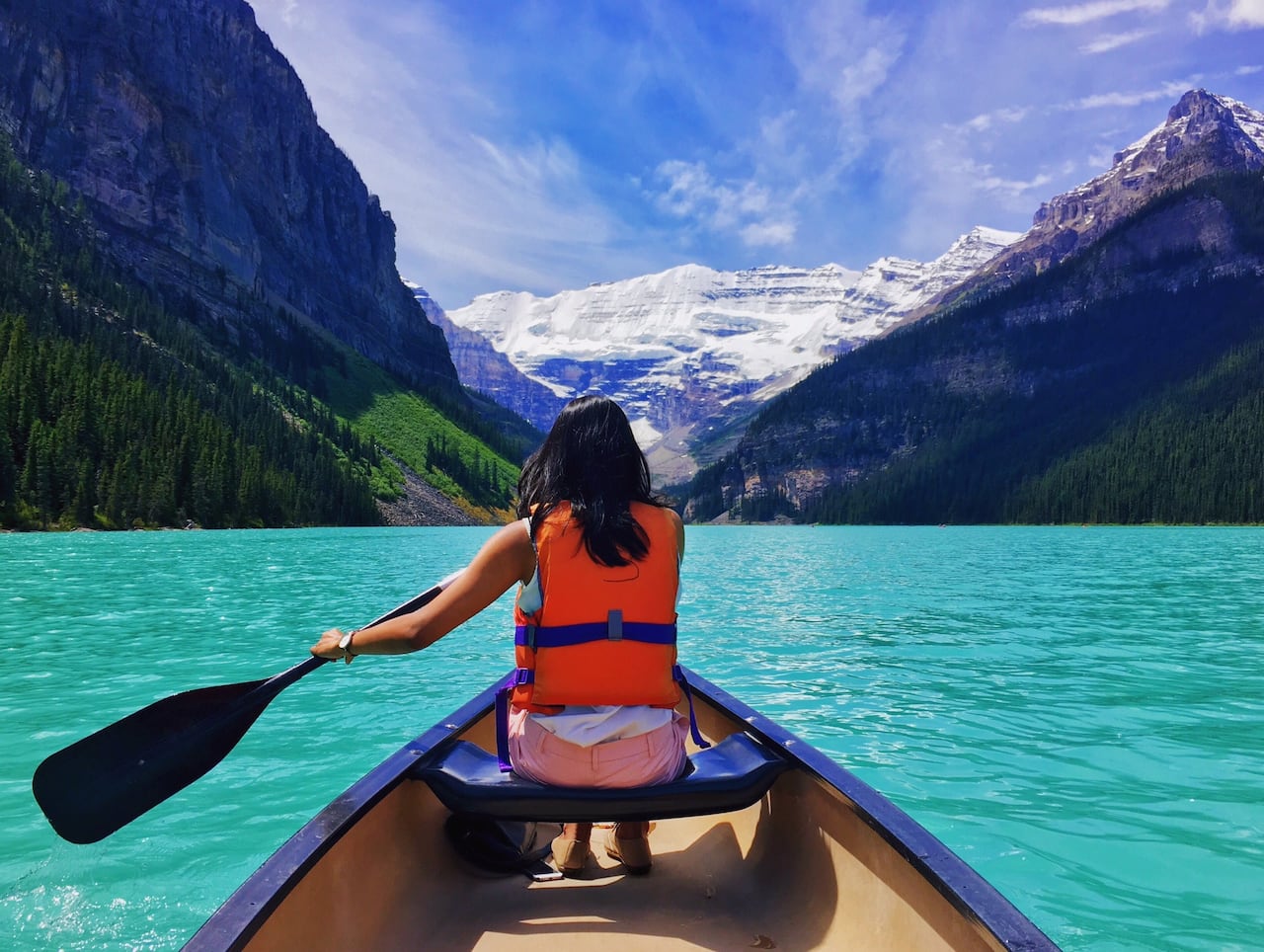Last Updated on July 27, 2023
Are you intrigued by the idea of kayaking but hesitant to try it because you don’t know how to swim? You’re not alone. Many people wonder if kayaking is hard if they lack swimming skills. In this article, we will explore the importance of swimming skills for kayaking and discuss safety measures for non-swimmers. We will also provide basic kayaking techniques for beginners and highlight the benefits of learning to swim for kayaking. Additionally, we will address the fear of water that non-swimmers may have and offer tips on choosing the right kayak and equipment. Seeking professional guidance and training, as well as practicing and gradually progressing in kayaking skills, will also be discussed. So, let’s dive in and discover how you can enjoy kayaking even if you don’t know how to swim!
Importance of swimming skills for kayaking
When it comes to kayaking, having swimming skills is of utmost importance. Here are some reasons why:
- Safety: Knowing how to swim can greatly enhance your safety while kayaking. In case of any mishap or accident, being able to swim can help you stay afloat and reach safety.
- Confidence: Having swimming skills can boost your confidence in the water. This can make you feel more comfortable and relaxed while kayaking.
- Emergency situations: In the event of a capsize or being thrown out of the kayak, being able to swim can help you handle the situation better and increase your chances of survival.
It is important to note that while swimming skills are crucial, there are safety measures that non-swimmers can take to enjoy kayaking. These measures will be discussed in the next section.
Safety measures for non-swimmers in kayaking
When it comes to kayaking, safety should always be a top priority, especially for non-swimmers. While it may seem daunting to venture into the water without knowing how to swim, there are several safety measures that can be taken to ensure a safe kayaking experience.
First and foremost, it is essential for non-swimmers to wear a properly fitted life jacket at all times while kayaking. This will provide buoyancy and keep them afloat in case of an accidental capsize. Additionally, it is important to paddle in calm and controlled waters, away from strong currents or rough waves.
Another safety measure for non-swimmers is to kayak in pairs or groups. This way, there will always be someone nearby who can provide assistance in case of an emergency. It is also advisable to inform someone on land about the kayaking plans and expected return time.
Basic kayaking techniques for beginners
Once you have gained some confidence in the water and have learned the necessary swimming skills, it is time to start learning the basic kayaking techniques. These techniques will help you navigate the water and control your kayak effectively.
1. Paddling technique
The first and most important technique to learn is the proper paddling technique. This involves using your core muscles to generate power and using the correct grip on the paddle. It is important to practice your paddling technique to ensure efficient and effective strokes.
2. Steering technique
Another important technique is the steering technique. This involves using your paddle to steer the kayak in the desired direction. You can use different strokes, such as the sweep stroke or the draw stroke, to control the direction of your kayak.
3. Bracing technique
Bracing is a technique used to prevent your kayak from tipping over. It involves using your paddle to support your body weight and maintain balance. Learning how to brace properly will help you stay stable and avoid capsizing.
By practicing these basic kayaking techniques, you will gradually improve your skills and become more comfortable on the water. Remember to start slow and gradually increase the difficulty level as you gain more experience. With time and practice, kayaking will become easier and more enjoyable for non-swimmers.
Benefits of learning to swim for kayaking
Learning to swim can greatly enhance your kayaking experience, even if you are a non-swimmer. Here are some benefits of learning to swim for kayaking:
- Increased safety: Knowing how to swim can greatly reduce the risk of accidents while kayaking. If you accidentally fall out of your kayak, being able to swim can help you stay afloat and reach safety.
- Improved confidence: Learning to swim can boost your confidence in the water, making you feel more comfortable and at ease while kayaking.
- Expanded kayaking opportunities: Many kayaking destinations require participants to have basic swimming skills. By learning to swim, you open up a wider range of kayaking locations and experiences.
- Enhanced physical fitness: Swimming is a great form of exercise that can improve your overall fitness and stamina. This can translate into better performance and endurance while kayaking.
- Increased enjoyment: Being able to swim confidently can make your kayaking adventures more enjoyable and stress-free. You can fully immerse yourself in the experience without worrying about your safety in the water.
Overall, learning to swim is highly beneficial for kayakers, regardless of their swimming abilities. It not only enhances safety but also opens up new opportunities and improves overall enjoyment of the sport.
Overcoming fear of water for non-swimmers
For non-swimmers, the fear of water can be a major obstacle when it comes to kayaking. However, with the right mindset and approach, it is possible to overcome this fear and enjoy the sport. Here are some tips to help non-swimmers overcome their fear of water:
- Start in shallow water: Begin by getting comfortable in shallow water where you can touch the ground. This will help build confidence and gradually reduce the fear.
- Use flotation devices: Wearing a life jacket or using other flotation devices can provide a sense of security and help non-swimmers feel more at ease in the water.
- Take small steps: Start by simply getting your feet wet and gradually progress to wading in deeper water. Take your time and go at your own pace.
- Practice breathing techniques: Learning proper breathing techniques can help calm anxiety and increase relaxation in the water.
- Seek support: Consider joining a swimming or kayaking class specifically designed for non-swimmers. Being surrounded by others who are in the same boat can provide a supportive and encouraging environment.
By taking these steps and gradually exposing yourself to the water, you can overcome your fear and confidently enjoy kayaking even if you don’t know how to swim.
Choosing the right kayak and equipment for non-swimmers
When it comes to kayaking, choosing the right equipment is crucial for everyone, especially for non-swimmers. It is important to select a kayak that is stable and easy to maneuver. Look for kayaks with a wider hull and a flat bottom, as these provide better stability on the water. Additionally, consider getting a kayak with a sit-on-top design, as it allows for easier entry and exit.
In terms of equipment, a personal flotation device (PFD) is a must-have for non-swimmers. Make sure to choose a PFD that is specifically designed for kayaking and fits properly. It should be comfortable to wear and provide adequate buoyancy in case of an emergency.
Furthermore, it is recommended to invest in a paddle leash, which will prevent your paddle from floating away if you accidentally drop it in the water. This can be especially helpful for non-swimmers who may have difficulty retrieving their paddle.
By choosing the right kayak and equipment, non-swimmers can enhance their safety and enjoyment while kayaking. Remember, safety should always be the top priority, and having the appropriate gear can make a significant difference in your kayaking experience.
Seeking professional guidance and training
For non-swimmers who are interested in kayaking, seeking professional guidance and training is highly recommended. Professional instructors have the knowledge and experience to teach proper kayaking techniques and safety measures. They can provide valuable guidance on how to navigate the water and handle different situations that may arise while kayaking.
Professional training can help non-swimmers build confidence in the water and overcome their fear. Instructors can teach specific techniques for non-swimmers, such as using a paddle float or practicing self-rescue techniques. They can also provide tips on how to stay safe and avoid potential hazards.
Additionally, professional training can help non-swimmers develop the necessary skills and strength to kayak effectively. Instructors can provide personalized instruction and feedback to help non-swimmers improve their paddling technique and overall performance.
By seeking professional guidance and training, non-swimmers can learn to kayak safely and confidently, opening up a whole new world of adventure on the water.
Practice and gradual progression in kayaking skills
Once you have learned the basic kayaking techniques and have gained some confidence in the water, it is important to continue practicing and gradually progressing in your kayaking skills. This will not only help you become a better kayaker, but it will also build your strength and endurance.
Start by practicing in calm and controlled environments, such as lakes or slow-moving rivers. This will allow you to focus on your technique without the added challenge of strong currents or waves. As you become more comfortable, you can gradually increase the difficulty of your paddling locations.
It is also important to set goals for yourself and track your progress. This will help you stay motivated and give you a sense of accomplishment as you reach each milestone. Consider joining a kayaking club or finding a kayaking buddy who can provide support and guidance as you continue to improve.
Remember to always prioritize safety and never push yourself beyond your limits. If you feel uncomfortable or unsure about a certain skill or situation, take the time to practice and build your confidence before attempting it.
With consistent practice and a gradual progression in your kayaking skills, you will soon find yourself enjoying the thrill and excitement of kayaking, even if you don’t know how to swim.
Wrapping it Up: The Importance of Swimming Skills for Non-Swimmers in Kayaking
As we come to the end of this article, it is clear that swimming skills play a crucial role in kayaking, even for those who don’t know how to swim. While it may seem daunting at first, there are safety measures and techniques that can be learned to ensure a safe and enjoyable kayaking experience.
Learning to swim not only enhances your safety on the water but also opens up a world of possibilities for exploring different kayaking destinations. Overcoming the fear of water is a significant step for non-swimmers, and with the right guidance and equipment, it is entirely possible.
Choosing the right kayak and equipment tailored to non-swimmers is essential to ensure comfort and stability. Seeking professional guidance and training can provide valuable insights and techniques to improve your kayaking skills.
Remember, practice makes perfect. Gradually progressing in your kayaking skills will build confidence and allow you to enjoy this thrilling water sport to the fullest. So, don’t let the lack of swimming skills hold you back from experiencing the joy of kayaking!
Learn how to kayak without swimming skills. Discover safety measures, techniques, and benefits for non-swimmers in this informative article.
About The Author

Fernánda Esteban is a food fanatic. She can't go more than a few hours without eating, and she loves trying new foods from all over the world. Her friends know that they can always count on her for a good conversation, and she's an animal lover who will never turn down an opportunity to pet a dog or cat. Fernánda also enjoys learning about random facts, and she's a social media practitioner who loves to share what she knows with others.

